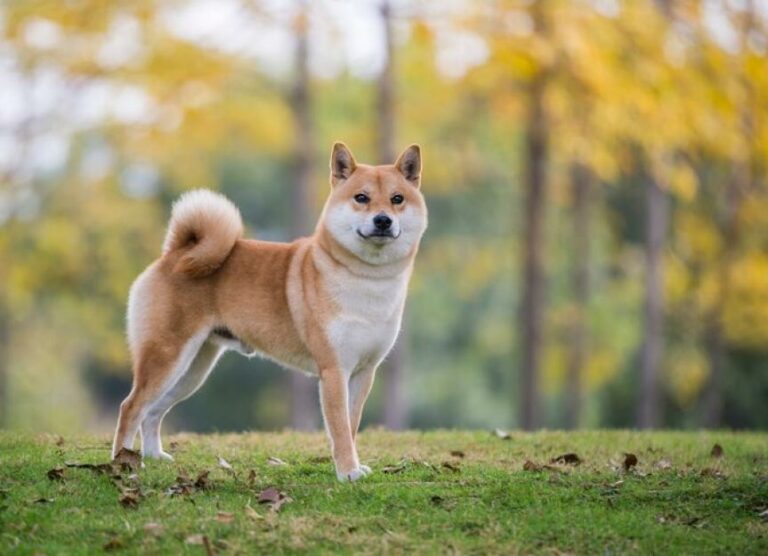Shiba Inu Dog Breed Information
The Shiba Inu, a prominent figure in meme culture, is an ancient dog breed from Japan that boasts a distinct cultural background. This small, agile dog, whose fox-like face has inspired popular memes, has gained a loyal following among dog lovers and pet parents. Initially, Shiba Inu hunters are intelligent and independent, traits that make them great for hunting but can make them a challenge to train and socialize. Understanding Shiba Inu’s mindset, much like cryptocurrency trends, is essential for those looking to forge a strong bond with this breed.
The Shiba Inu’s rise from a handy hunter’s companion to a family favorite and internet meme symbolizes the evolutionary nature of our relationship with dogs. By 2023, the Shiba Inu will have transitioned from the mountains of Japan to the hearts of people worldwide, not just as pets but also as esteemed icons in pop culture, memes, and cryptocurrency forums. This breed’s journey, mirroring the dynamic of the crypto market trends like the rise in this token, reveals much about our shared past and present, both in absolute and digital worlds.
Key Takeaways
- Shiba Inus originated in Japan as skilled hunting dogs.
- They’re known for their independence and intelligence.
- Shibas have become globally beloved, both as pets and in media.
Quick Facts
The Shiba Inu is known for its quick movements, thick fur, and curled tail. These dogs are known for living long lives full of energy. They are small, making them great for any living space, whether a city apartment or a country house. Despite their size, they are pretty sturdy and live between 13 and 16 years on average.
Originating from Japan, the Shiba Inu is valued for its keen senses and independent nature. These traits make it a favored pet in Japan. The breed was recognized by the American Kennel Club in 1992. Because of their loyal nature and manageable size, Shiba Inus fit well into the Northern and Non-Sporting groups of dogs.
Shiba Inu Dog Breed Pictures
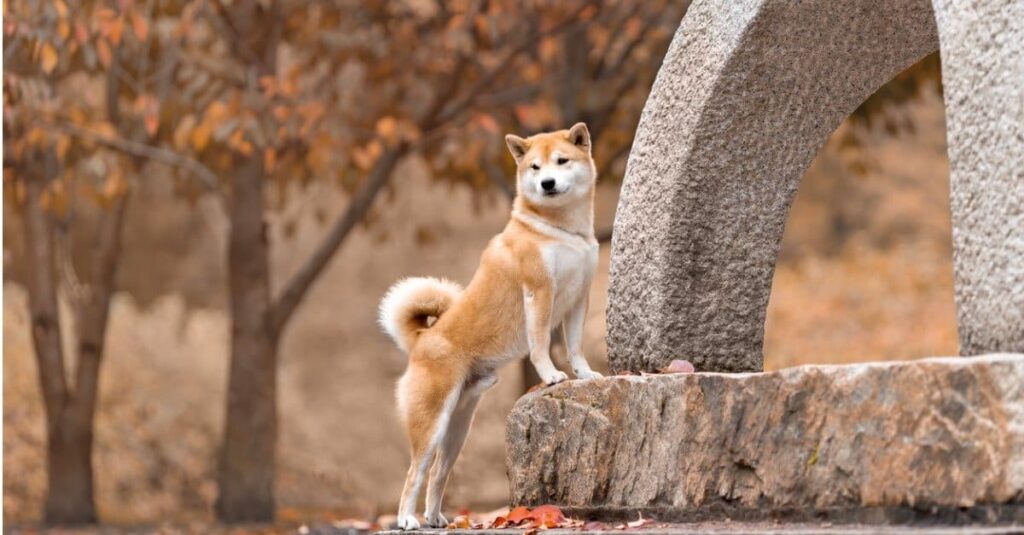
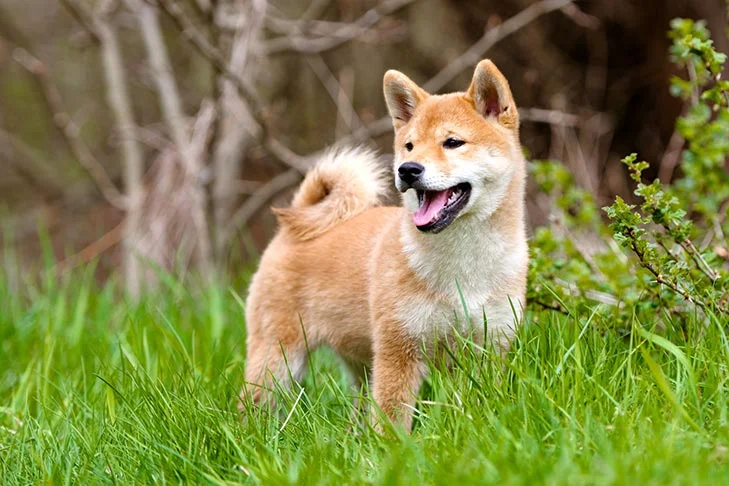
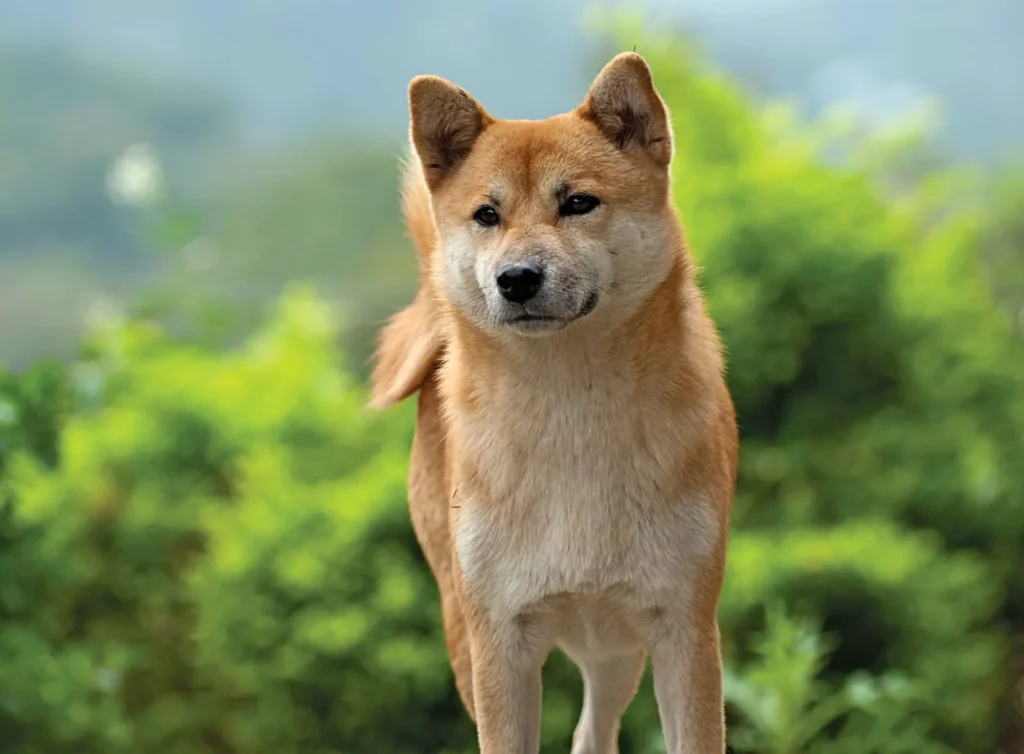
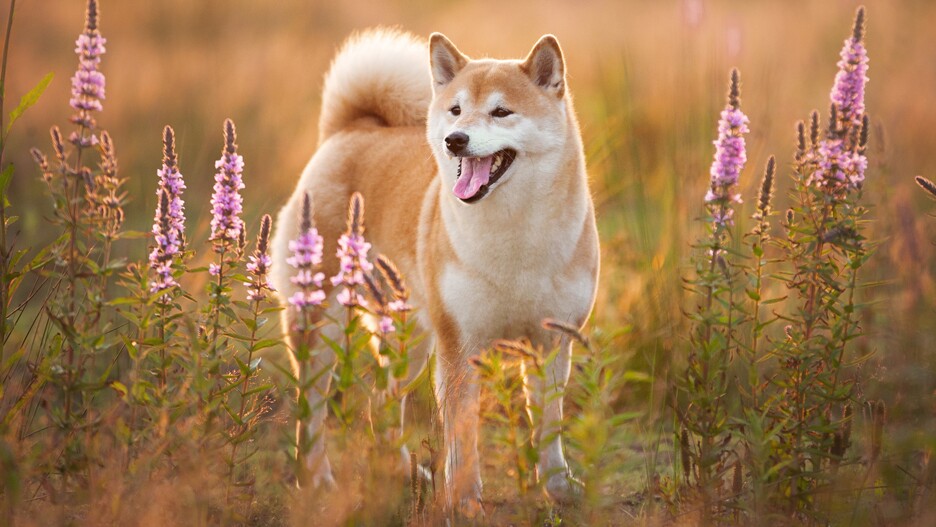
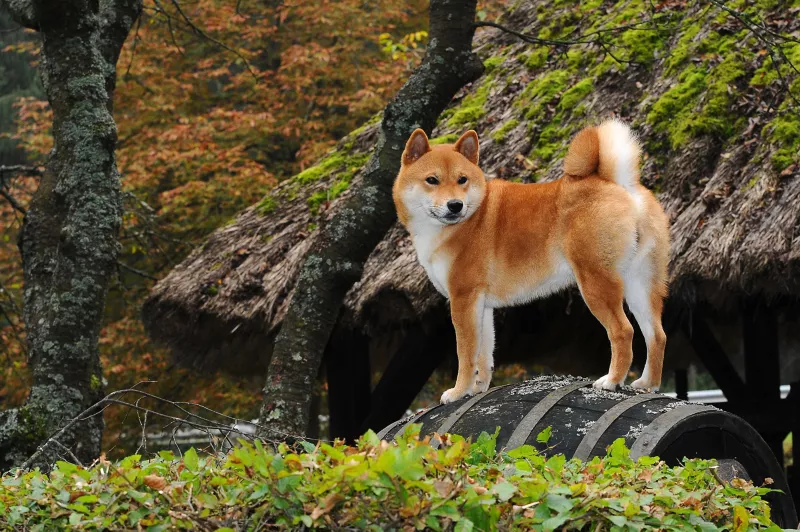
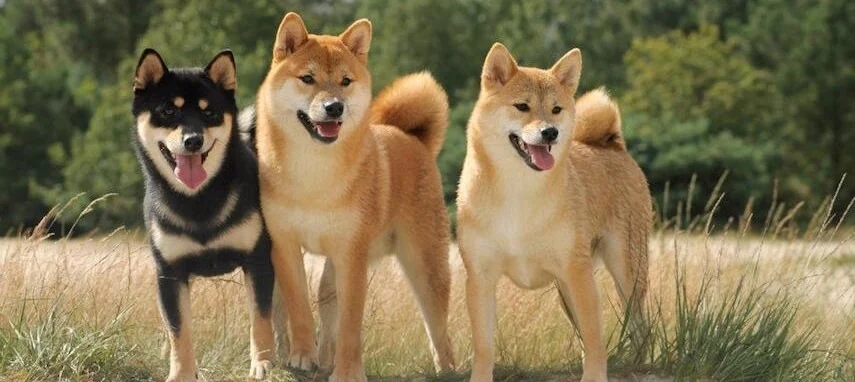
Overview
Having established the Shiba Inu’s essential characteristics and popularity, we will examine the breed in more detail, including its physical attributes, temperament, and care requirements.
Shiba Inu dogs exhibit a robust conformation, with males typically standing at 14.5-16.5 inches and weighing approximately 23 pounds, while females are slightly smaller at 13.5-15.5 inches tall and 17 pounds. They possess a life expectancy of 13-16 years.
As members of the Non-Sporting Group and revered for their ancient Japanese origins, Shiba Inus were initially bred for hunting and have evolved into admired companion dogs in Japan.
The American Kennel Club (AKC), a credible source for breed standards, emphasizes the importance of responsible ownership, providing extensive guidance on health, training, and the advancement of canine sports for Shiba Inu dogs.
Key Traits
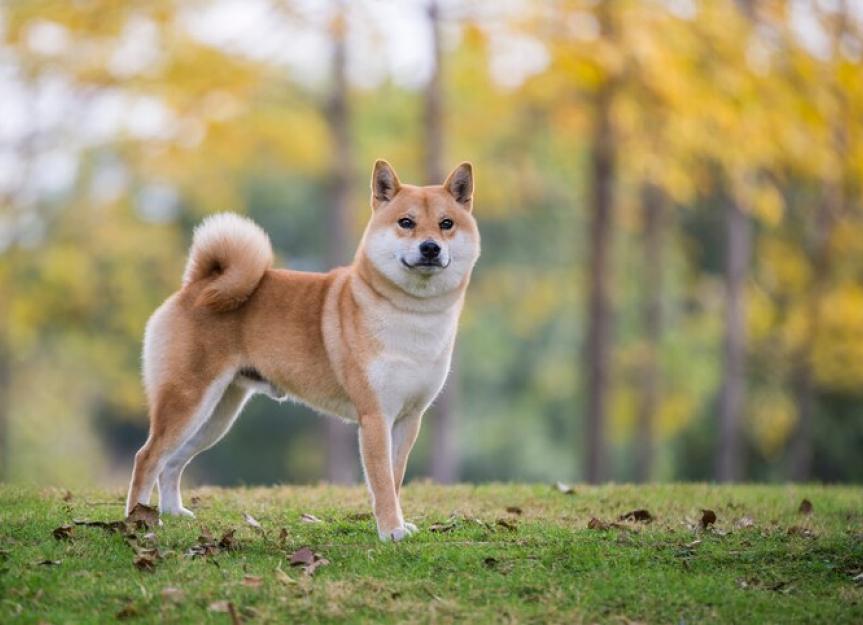
Shiba Inus stand out with their lively nature, resembling a fox and sporting a well-built frame, showing their quickness and smartness. These dogs come with a protective double coat and a distinctive curled tail that reflects their heritage. They are Alert and devoted and make great pets, and their tendency to stay clean is a bonus for their owners. Originating as hunting dogs in Japan, the Shiba Inu is versatile and has a strong health profile, often leading to a long life.
Regarding size, Shiba Inus are not too big or small, but just right with a solid and fit body. Their personality is full of zest and friendliness, showcasing their skill and confidence. Their looks are marked by a fluffy double coat and a tail that curls right over their back, ticking all the boxes for breed standards. These pups are faithful and self-sufficient, allowing them to thrive in different living situations.
Origins and Evolution
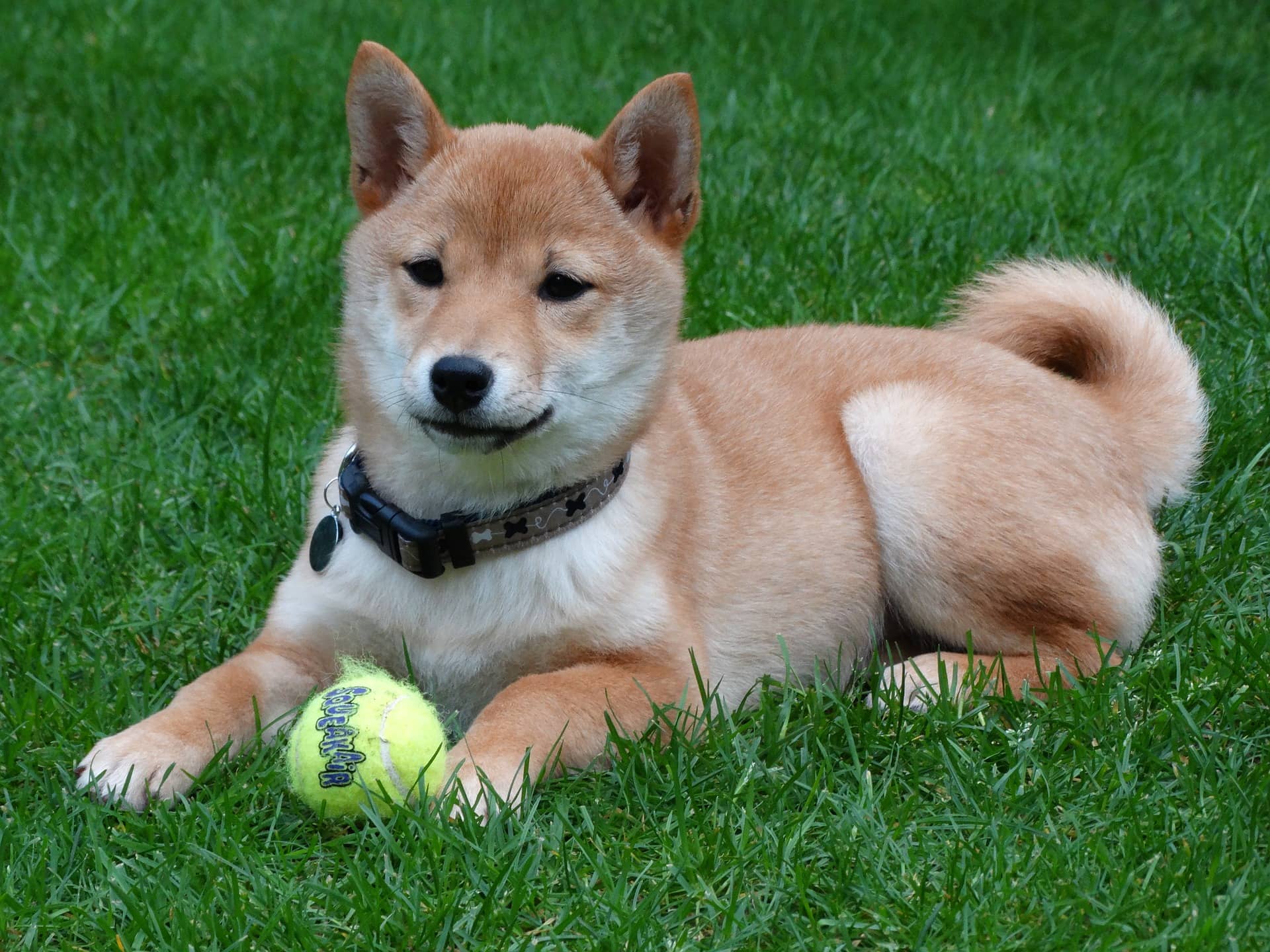
The Shiba Inu is a celebrated dog breed from Japan with a history that dates back centuries. These dogs give us a glimpse into Japan’s ancient canine breeds and their cultural significance. Studying Shiba Inu’s past shows us how they’ve survived and adapted, shaping the dogs we love today.
Experts believe that the Shiba Inu’s ancestors first appeared around 300 B.C., making them among the oldest and smallest of Japan’s native dog breeds. The unique characteristics of the Shiba Inu result from careful breeding and Japan’s geographic isolation. After nearly disappearing during World War II, dedicated efforts helped bring the breed back from the brink, preserving its unique genetics.
Knowing how the Shiba Inu has developed over time explains why they are versatile and hardy pets.
Ancient Japanese Breeds
The Shiba Inu, hailing from Japan’s mountainous areas, is a breed with ancient roots and a well-preserved genetic lineage, initially bred for hunting. These dogs are small but sturdy, with a thick coat that protects them against the harsh climate they come from. You can easily recognize a Shiba Inu by its curled tail and the alert look in its eyes, traits often seen in dogs that have been around for centuries. Their history goes back to the Jōmon period, which was long ago.
During World War II, the Shiba Inu breed was almost wiped out. However, thanks to dedicated people who wanted to save this breed, we still have Shibas today. They come from three main lines: the Shinshu Shiba from the Nagano region, the Mino Shiba from the Gifu area, and the Sanin Shiba from the northeastern part of Honshu. The Shiba Inu is a popular pet known for its resilience and unique place in Japan’s dog history.
The Shiba Inu adapts well and is loved by many as a family pet. They continue to be a symbol of Japanese culture and tradition.
Shiba Inu Ancestry
Reflecting on the storied past of these ancient hunters, a deeper examination of the Shiba Inu’s ancestry reveals a lineage steeped in history and a breed evolution that has withstood the test of time. As an ancient Japanese breed, the Shiba Inu is recognized as a basal breed, indicating its origins predate many modern species.
These Japanese Shiba were initially bred for hunting, demonstrating a robust and adaptable nature, contributing to their survival through challenging periods, including near extinction during World War II. The American Kennel Club’s recognition of the Shiba Inu underscores its historic significance and contribution to canine diversity.
Characterized by a compact frame and an alert demeanor, the Shiba Inu’s physical attributes mirror its primitive ancestry and independent spirit.
The Shiba Inu has a rich history as one of the oldest dog breeds from Japan, with its roots going back centuries before many other dog breeds were established. These dogs were initially bred for hunting, showcasing their strength and adaptability, which helped them endure tough times, including the threat of extinction during the Second World War.
The American Kennel Club acknowledges the Shiba Inu for its historical importance and role in enriching the variety of dog breeds. The breed’s small size and keen alertness reflect its ancient lineage and self-reliant nature.
Breed Development Stages
Delving into the breed development stages of the Shiba Inu, it becomes evident that this canine’s evolutionary journey from ancient hunter to modern companion has been marked by resilience and adaptability.
Originating in Japan, the Shiba Inu’s lineage is steeped in a history of utility in hunting, a trait that has shaped its spirited and good-natured temperament. Despite their near extinction during the Second World War, concerted preservation efforts led to the breed’s resurgence, safeguarding the three main bloodlines: Shinshu Shiba, Mino Shiba, and Sanin Shiba.
As a primitive breed, the Shiba Inu maintains a robust and compact frame, with a double coat and a signature curly tail. Their alert, loyal, and independent characteristics continue to endear them to many, though care must be taken to manage potential health issues through regular exercise and health screenings.
Physical Dimensions
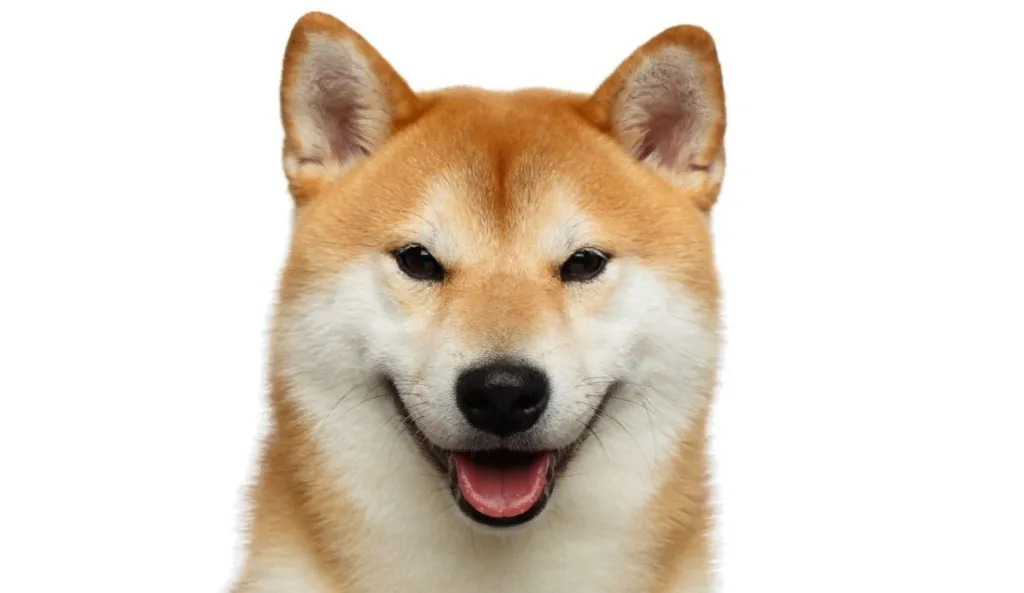
Its heritage and adaptability shape the physical characteristics of the Shiba Inu. A dog’s size, weight, and body shape are vital in determining its health and behavior. Studying how Shiba Inus grows reveals their development and how they reach their recognizable adult size.
- Using height and weight to gauge breed conformity
- The role of body shape in a dog’s agility and movement
- How growth phases affect a Shiba Inu’s behavior and body
- Analyzing other dog breeds to showcase the Shiba Inu’s unique features
The dimensions of the Shiba Inu tell us about the breed’s past and how well it can function. Understanding a breed’s typical size range, weight class, and body ratios helps us appreciate its look, health, and likely behaviors. Looking at the growth stages of a Shiba Inu gives us a better idea of how they develop and grow into their recognizable adult shapes.
- Height and weight figures are vital in defining breed standards
- How the proportions of a dog’s body affect its movement and agility
- The influence of various stages of growth on a dog’s physical and behavioral characteristics
- Comparing Shiba Inus with other breeds shines a light on their distinct physical qualities
Average Size Range
Shiba Inus are relatively small dogs, with adult males typically standing between 14.5 and 16.5 inches tall, while the females are usually a bit shorter, ranging from 13.5 to 15.5 inches in height. Their stature is small but sturdy, showcasing a compact build and strong muscles, highlighting their agility and history as adept hunting dogs.
On average, male Shiba Inus weighs about 23 pounds, and females tend to be lighter at around 17 pounds, giving them a well-balanced weight-to-height ratio that adds to their unique look.
The breed’s physical traits are further emphasized by their double coat. This consists of a harsh, straight top coat and a soft, dense undercoat, keeping them warm and protected against different weather conditions.
Weight Classification
Understanding the typical size and weight of Shiba Inus is critical when assessing their health and needs. Known for their vigorous nature, Shiba Inus possess a compact and muscular build that places them in the small to medium dog category.
A male Shiba Inu usually tips the scales at about 23 pounds and has a height of 14.5 to 16.5 inches. Female Shiba Inus tend to be lighter, weighing 17 pounds, with sizes ranging between 13.5 and 15.5 inches. The breed’s sturdy build is topped with a dense double coat and a signature curled tail that adds to its alert appearance.
To keep them healthy, regular veterinary check-ups are essential. This helps to catch any hereditary conditions early on. Shiba Inus are expected to live between 12 and 16 years, so maintaining their well-being is necessary for a long, happy life.
Height Measurement
Male Shiba Inus typically stand at a height of 14.5 to 16.5 inches, while female Shiba Inus are usually shorter, ranging from 13.5 to 15.5 inches.
Known for their agility and well-proportioned bodies, these dogs are part of the Non-Sporting Group. They are loved for their energetic and friendly nature.
The compact size of the Shiba Inu makes it a versatile companion, suitable for both small city flats and large country homes. The height of a Shiba Inu is crucial because it affects the dog’s health, mobility, and how well it fits into various activities and lifestyles.
Measuring a Shiba Inu’s height accurately ensures it meets the breed’s standards.
Body Proportions
The Shiba Inu is a dog breed that combines strength and agility in a small package. This breed is muscular and agile, a nod to its past as a hunter in the mountainous regions of Japan. The Shiba Inu has a coat made for the outdoors, with a rigid top layer and a warm undercoat.
Its tail curls over its back, giving it a fox-like look and signaling its unique heritage.
These dogs are sturdy and elegant, traits that show they’re ready to act and fiercely loyal. They carry themselves confidently, apparent in their alert stance and assured presence.
Growth Stages
The Shiba Inu breed experiences various life stages, starting as energetic puppies and growing into adults with distinctive features like a sturdy, muscular frame and their signature curled tail. Female Shiba Inus tend to reach a height of 13.5 to 15.5 inches, whereas males are usually a bit taller, ranging from 14.5 to 16.5 inches. Once fully grown, female Shiba Inus often weigh about 17 pounds, and males typically weigh closer to 23 pounds. These dogs are known for longevity and are commonly aged between 13 and 16.
During their lifetime, they develop a strong body structure, marked by a well-developed muscle system. Their double coat matures into a layer of straight, coarse fur on top. Regarding personality, Shiba Inus are known for their vigilant nature and deep-seated loyalty to their owners.
Behavioral Characteristics: Considering When Choosing
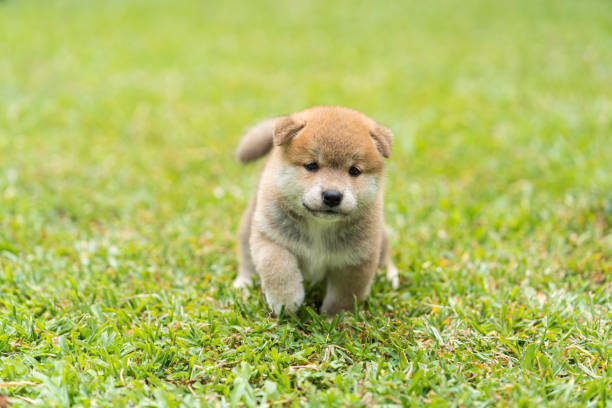
Shiba Inus exhibits a range of behaviors that can be complex. These behaviors are shaped by their genes, the environment they live in, and how they are raised. Understanding Shiba Inu’s personality is essential to live together peacefully and train them effectively. Critical aspects like their need for socializing, how they respond to training, their activity levels, and typical behavior problems should be addressed for their happiness and health.
- Personality Characteristics
- Socializing Requirements
- Training and Discipline
- Typical Behavior Challenges
When it comes to Shiba Inus, their personality is often independent and confident. They may exhibit a strong will and a certain level of stubbornness, which can challenge training. Their need for socialization is equally essential. Shiba Inus can be reserved around strangers and may require early socialization to prevent aggressive tendencies.
In terms of training and obedience, consistency is critical. These dogs respond well to positive reinforcement and clear boundaries. Regular exercise is not just about physical health; it also helps these energetic dogs to maintain good behavior. Without enough activity, Shiba Inus may develop destructive habits.
Lastly, Shiba Inus is known for specific behavioral challenges. They can be prone to barking and may have a strong prey drive. Addressing these issues early on with proper training and socialization can lead to a well-adjusted pet. Remember, understanding and patience are essential when dealing with any behavior problems.
Temperament Traits
Shiba Inus are known for their bold behavior and love of independence. These dogs are naturally pleasant and straightforward, often appearing charmingly confident. They are spotless, making it easier for their owners to groom them.
They have a unique loud cry known as the ‘Shiba scream’ when upset or threatened. Socializing and training these dogs early on is essential to prevent aggressive tendencies toward other dogs.
Shiba Inus can adapt well to different living situations with patient and consistent guidance.
Social Interaction Needs
Understanding the temperament of Shiba Inus is vital for their development as pets. These dogs may enjoy their independence, but it isn’t a good idea to leave them alone for too long. They need to socialize early on, which helps them get along with other dogs and people. This also reduces their natural tendency to be wary of new faces.
Shiba Inus are known for their bold personalities. They need lots of exercise and mental stimulation to stay happy and healthy. Paying attention to their emotional state is also essential. For instance, if a Shiba Inu ‘screams,’ it’s usually a sign they’re upset. Training them well and ensuring they get plenty of time around other dogs and people is necessary to prevent aggressive behavior.
Training and Obedience
Shiba Inus are smart, but they like to do things their way. Training these dogs means being patient and consistent. They’re naturally intelligent and have a strong will, making teaching tricky. To get them to listen, use rewards, and stay positive.
For the best results with Shiba Inus, start socializing them early and set firm rules. Use a step-by-step training process with lots of repetition and treats to reinforce good behavior. This way, their natural talents become good manners, making life with your dog more enjoyable.
Exercise Requirements
Exercise is vital for Shiba Inu’s obedience and overall health. These dogs need plenty of activity every day, at least an hour, to stay in good shape. Walks should be long enough to match their high stamina. They also enjoy other forms of exercise, like running and agility training, which keep them physically active. Playtime is also great for their energy levels.
Training and interactive toys are necessary to keep a Shiba Inu’s mind sharp. This helps prevent destructive behaviors such as destroying things or barking too much. A well-exercised and mentally stimulated Shiba Inu is more likely to be well-behaved.
Common Behavioral Issues
Despite their cute looks, Shiba Inus often have behavioral issues due to their independent spirit. They’re known for the ‘Shiba scream,’ a piercing sound they make when upset or threatened.
These dogs might not be naturally friendly and could act aggressively toward other dogs if not trained properly. The Shiba Inu’s ancient lineage gives them a watchful and devoted nature and a wild side that needs firm and early socialization and training.
They are bright and keep themselves clean, yet owning one can be challenging due to their strong personality. Success with a Shiba Inu means being ready to handle their lively traits and ensuring they’re well-behaved at home.
Wellness and Common Ailments
Shiba Inus are generally healthy dogs but can still face some health challenges. Owners must learn about these potential issues and how to prevent them to keep their Shiba Inu happy and thriving. By taking steps to care for their health, owners can contribute to their pet’s longevity and quality of life as they grow older.
Health Concerns to Watch For Knowing and managing conditions more likely to affect this breed is vital.
Tips for Preventive Health: Implementing practices to reduce the risk of illness is a proactive approach to pet care.
Understanding the Golden Years: Knowing how aging impacts Shiba Inus will help owners support their pets as they grow older.
Regular Vet Visits: Consistent check-ups with a vet can catch problems early and lead to better health outcomes.
Typical Health Issues
Shiba Inus are solid and lively dogs, but they have specific common health problems that owners should watch out for. These include allergies, eye issues, hip dysplasia, and a knee condition called luxating patella. Regular vet visits are essential to keep a Shiba Inu healthy.
Skin allergies can cause scratching and discomfort, so managing their environment and seeking treatment if needed is essential. Eye health is critical because they can develop glaucoma and cataracts, so early eye checks are advised. Hip dysplasia, a hip joint deformity, can lead to pain and difficulty moving. Luxating patella, where the kneecap pops out of place, may cause a Shiba Inu to walk oddly or even limp.
Regular exercise helps prevent these issues. It keeps their muscles and bones strong and helps avoid weight gain that could worsen their health problems.
Preventative Care Tips
Understanding the health issues common to Shiba Inu is vital for longevity and happiness. To keep them healthy, it’s essential to have a plan for preventative care.
This plan should include regular vet visits to stay ahead of any health issues and timely vaccinations to protect against diseases. Feeding your Shiba Inu a well-rounded diet and providing daily exercise helps maintain a healthy weight, which is good for their heart, joints, and digestion.
Good dental care is also crucial. Brush your dog’s teeth often and give them dental treats to fight off gum disease. Keeping your Shiba Inu clean and well-groomed makes spotting any potential skin problems easier.
It’s also important to be alert for early symptoms of allergies, genetic issues like hip dysplasia, and eye diseases so you can get your pet help quickly if needed.
Lifespan and Aging
Shiba Inus can live between 13 and 16 years. Proper care and good nutrition are crucial to help them age well. As they grow older, they may face several health issues like allergies, eye problems such as glaucoma and cataracts, hip dysplasia, entropion, and knee issues like luxating patella. Regular vet check-ups are essential to catch and manage these health challenges early.
Keeping Shiba Inu active is essential for maintaining muscle strength and brain health. Adjusting their diet to suit the needs of an older dog helps ensure they get the proper nutrients.
Also, keeping them mentally stimulated and socially active is essential for their happiness and cognitive health.
Essential Maintenance Practices
Caring for Shiba Inu involves various health and wellness activities crucial to their well-being. These efforts help maintain these energetic dogs’ physical and mental health, ensuring they lead happy lives.
Regular check-ups at the vet are essential for catching any health issues early on and keeping the dog’s vaccinations current. A specific diet plan is necessary to meet the Shiba Inu’s unique nutritional needs.
A daily exercise regimen is vital to keeping the dog physically active and can prevent behavioral problems. Training is also essential, providing the dog with the necessary discipline and ability to interact well with others.
Regular Health Check-Ups
Regular health check-ups are crucial for maintaining Shiba Inu’s health and catching issues early on. Visits to the vet for your Shiba Inu should include vaccinations, parasite control, and dental care to prevent common diseases. During these check-ups, vets perform thorough physical exams and monitor the dog’s weight, diet, exercise habits, and behavior to ensure they stay in top shape.
Blood tests and genetic screenings can reveal if a Shiba Inu is prone to certain conditions, allowing for early intervention. Keeping a consistent check-up schedule and watching for any changes in your dog’s health is vital to keeping them healthy. Taking these proactive steps is a big part of caring for your Shiba Inu.
Proper Nutrition Plan
A well-rounded diet is crucial in keeping a Shiba Inu healthy and energetic. Focusing on high-quality proteins, essential fats, and carbs is vital.
To keep these dogs at a healthy weight, it’s necessary to manage their food portions and stick to a consistent feeding schedule. Fresh water should always be on hand, and feeding smaller meals more often can help avoid bloat, which is dangerous for this breed.
Working with a vet or a pet nutrition expert is a smart move to ensure a Shiba Inu’s diet meets its specific needs, especially if the dog has health issues or food sensitivities.
It’s also important to regularly check the dog’s physical condition to ensure its diet is on track and make any needed changes.
Daily Exercise Routine
For the health and happiness of a Shiba Inu, it’s vital to have a consistent exercise schedule. Each session should begin with a short warm-up of about 5 to 10 minutes to get your dog ready for the workout.
Mixing cardio exercises with muscle-building activities is an excellent way to work out different body parts and keep them in top shape. Ensuring your Shiba Inu exercises for at least 30 minutes daily is a great way to maintain their well-being and see positive changes over time.
After they’ve been active, help them wind down with another 5 to 10 minutes of gentle stretching; this reduces their chances of getting hurt and helps keep their joints supple.
Always watch how your Shiba Inu is handling the exercise, and be ready to adjust how much and how hard they work to avoid any injuries.
Grooming and Hygiene
Ensuring the health and happiness of a Shiba Inu involves more than just regular walks. It’s critical to keep up with their grooming needs, too. Their unique double coat, with a dense underlayer and a top layer of guard hairs, should be brushed often. This helps to get rid of dead hair and stops knots from forming, especially when they’re shedding.
Shiba Inus don’t need baths too often but pick a mild dog shampoo when they do. Aim for a bath every one to three months to keep their coat fresh and clean. Keeping their nails short is also crucial for a comfortable walk — aim to trim them every one to two months.
Remember their ears; cleaning them regularly can prevent dirt buildup and infections. And for their dental health, brushing their teeth and giving them dental chews can help keep their smiles bright.
Behavioral Training Techniques
When training a Shiba Inu, using positive reinforcement is critical. This breed loves getting treats and praise for good behavior. Training that rewards dogs helps them learn in a friendly, willing way. It would be best to be consistent and patient, as Shiba Inus can sometimes be independent and stubborn.
Housebreaking is easier with crate training. It also gives your Shiba Inu a safe place to relax. Keeping your dog mentally busy is also vital. Puzzle toys can prevent naughty behavior by keeping your dog’s mind active. If you’re struggling with training, don’t hesitate to get help from a professional dog trainer. They can offer customized advice that works.
Nutritional Requirements and Diet Tips
Shiba Inus require a special diet that’s essential for their health. Understanding what makes a balanced diet and how often to feed them is critical to meeting their energy needs. We must consider any food allergies or sensitivities to keep them healthy.
The right mix of proteins, fats, and carbohydrates is essential for their growth and energy. Having consistent meal times to support their metabolism and avoid weight gain is also beneficial. Knowing which ingredients could cause allergic reactions helps create a diet that won’t upset their stomach.
Incorporating various foods in moderation supports their immune system and digestive health. This diverse approach to their diet can prevent nutritional deficiencies and promote overall well-being.
Balanced Diet Essentials
A nutritious diet is vital for Shiba Inu’s health and energy. It should include a good balance of proteins, fats, and carbs to support the dog’s body functions.
High-quality lean meats or fish protein is vital for muscle health and repair. Omega-3 and omega-6 fatty acids are essential as they keep the skin healthy, the coat shiny, and the immune system strong.
Various fruits and vegetables add essential vitamins, minerals, and antioxidants, which are great for the dog’s health.
Always talk to a vet to determine the right food amounts and how often to feed your Shiba Inu, considering their age, size, and activity.
Feeding Frequency Guidelines
Knowing what a balanced diet for a Shiba Inu looks like is the first step. The next is figuring out how often to feed your furry companion for peak health and happiness.
The meal frequency for a Shiba Inu changes depending on their stage in life and overall health. Puppies need much energy to grow, so they should eat 3 to 4 times daily.
When they grow up, adult dogs do well with two meals every day. This keeps their digestion on track and helps avoid weight gain.
Older dogs might benefit from smaller, more frequent meals. This helps with their digestion and considers any problems they might have with their teeth.
Keep an eye on your dog’s weight and adjust how often they eat accordingly to keep them in tip-top shape. Always talk to a vet to tailor meal plans. They can advise you on the right frequency and portion size for your Shiba Inu ‘sun, activity, and health.
Allergies and Food Sensitivities
When caring for Shiba Inus, it’s vital to be alert to food allergies and sensitivities that could impact their health. These dogs can react negatively to common ingredients like wheat, corn, and soy. A diet with fewer ingredients and new protein sources is often suggested to lower these risks. Watch for signs such as itching, ear infections, or stomach problems, and consider a hypoallergenic diet if they continue.
Fish oil, a source of Omega-3 fatty acids, is excellent for a Shiba Inu coat and can help reduce allergic reactions. It’s wise to avoid giving them human food that’s not meant for dogs. Always work with a vet to create a balanced diet considering food sensitivities.

